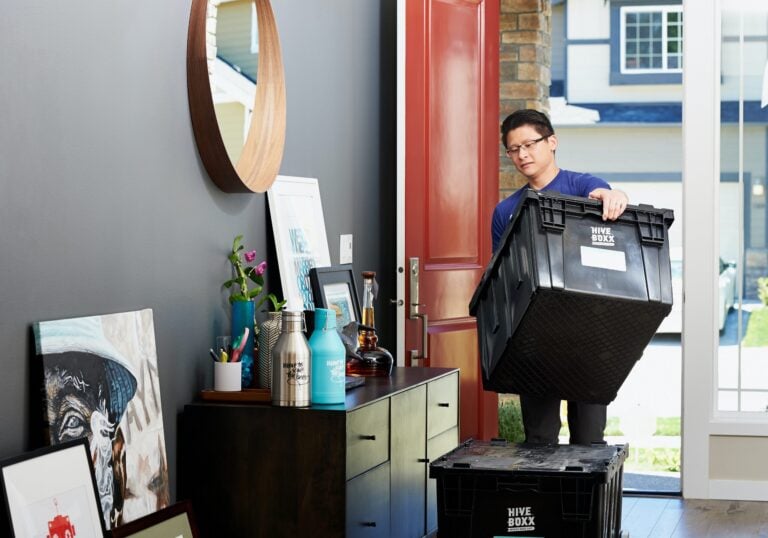Eco-Upgrades After Move-In: A Homeowner’s Practical Guide to Going Greener
 Moving into a new home feels like a clean slate. Fresh walls, untouched systems, and a chance to make it yours. If sustainability’s on your mind, this is the perfect moment to start smart. Not everything has to be big or expensive. Some of the most effective upgrades are simple, early, and invisible. This guide gives you the first moves — practical, low-lift changes that save energy, lower bills, and make your home better from the inside out.
Moving into a new home feels like a clean slate. Fresh walls, untouched systems, and a chance to make it yours. If sustainability’s on your mind, this is the perfect moment to start smart. Not everything has to be big or expensive. Some of the most effective upgrades are simple, early, and invisible. This guide gives you the first moves — practical, low-lift changes that save energy, lower bills, and make your home better from the inside out.
Know what’s covered before you rip and replace.
Eco-friendly upgrades sound exciting, but pause before you dive into systems like HVAC or electrical. Why? Because your builder’s warranty may already cover them. In most new builds, structural components, major systems, and key equipment are protected for several years. That means early upgrades to these systems might waste both money and warranty value. Before committing to changes, check your paperwork, call the builder, and learn your home builder warranty coverage details. This clarity helps prioritize your projects and protect your investment.
Start with what you can’t see — air leaks.
Brand-new builds often give off a false sense of energy efficiency. But once the HVAC kicks in and your utility bills arrive, gaps around windows, doors, and attic hatches start showing their hand. Upgrades that target these small flaws can deliver improved airflow and energy savings. Focus on the quiet stuff — weatherstripping, caulking, and sealing penetrations in attics or crawlspaces. Air sealing works best before you dump money into new equipment. It helps every other system perform better while keeping energy waste in check.
Swap out bulbs — all of them.
LEDs aren’t new, but the average new home is still packed with wasteful incandescents or halogen relics. The impact is low-key but long-haul. The moment you move in is the moment to go room by room and replace bulbs in fixtures that stay on the longest. With quality LEDs, you’ll consume up to 75% less energy without changing how the home looks or functions. Bonus: they stay cool to the touch and won’t need replacing for years. It’s a fast win, especially if your utility offers rebates. No fancy wiring. Just unscrew, screw in, done.
Think early about solar — even if you’re not ready.
Most homeowners delay this conversation until years down the line. But if you’re already settling in, now’s the moment to plan — even if installation comes later. Mapping your exposure, panel zones, and energy usage now can save serious headaches later. Look into your neighborhood’s HOA rules, local net metering programs, and where your electric panel sits. Understanding these logistics early helps avoid redesigns or cost spikes. If solar is in your future, start with a complete solar retrofit timeline so you can work backwards from what’s possible, not just what’s ideal.
Repaint smart — your lungs will notice.
You might not think much about the paint on your walls, but it lingers in your air for weeks, sometimes months. VOCs — volatile organic compounds — off-gas quietly and constantly, even in “fresh” builds. If you plan to repaint, touch up, or personalize walls, choose a product that helps enhance indoor air quality instead of compromising it. Look for low- or zero-VOC options in finishes you actually like. Air it out thoroughly, and do high-impact spaces first — bedrooms, nurseries, living rooms. Clean color, clean air, clean conscience.
Install a smart thermostat.
Thermostats are like habits: the earlier you adjust them, the more natural they feel. A programmable or learning thermostat gives you direct control over comfort without needing to think about it every day. More importantly, it adapts to your actual patterns — when you’re gone, when you sleep, when the sun hits the living room hard at 3 p.m. Don’t wait until your usage settles. Start early, and let the device shape your rhythms. The automated temperature control benefits go beyond convenience — you’ll notice better balance in both comfort and bills within weeks.
Fix your flow — water’s part of the energy picture.
People often overlook the connection between water usage and energy waste. Heating water is a huge part of your utility bill, and inefficient faucets and showers waste gallons by the minute. Swapping them for modern low-flow fixtures doesn’t just conserve — it transforms the feel of daily tasks. The right models can lower your energy and water usage while maintaining strong pressure. Do your kitchen and primary shower first, then move outward. It’s a weekend project with years of impact.
Sustainable upgrades don’t require a gut renovation or green-tech overhaul. They just need timing, clarity, and a clear sense of what matters most in a new home. From air sealing and lighting to smart systems and low-VOC choices, small steps add up when you take them early. Every one of these upgrades extends your comfort, trims your bills, and reduces waste before it becomes a pattern. Think of your home not just as a space to decorate — but as a system to shape. And when you begin with intention, you’ll find the momentum keeps building, one upgrade at a time.
Join the Sustainable Living Association to empower the next generation of climate leaders and be a part of the solution for a sustainable future!


